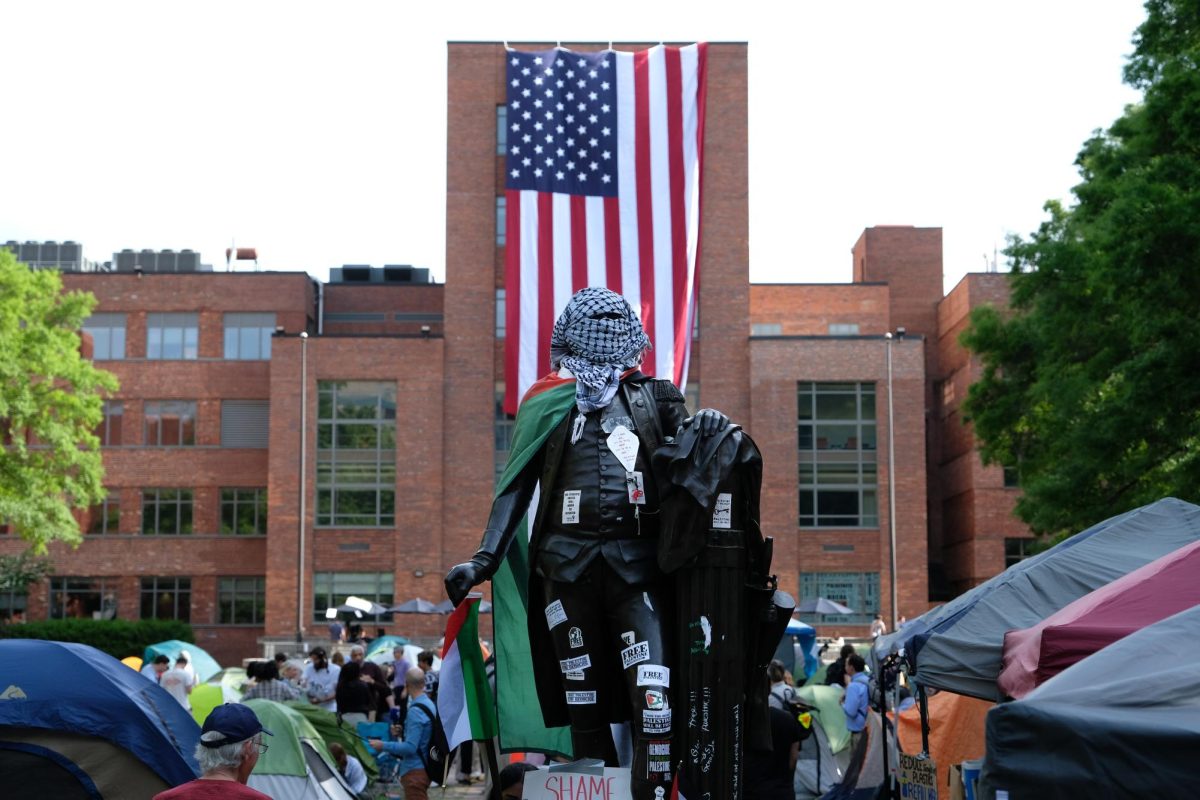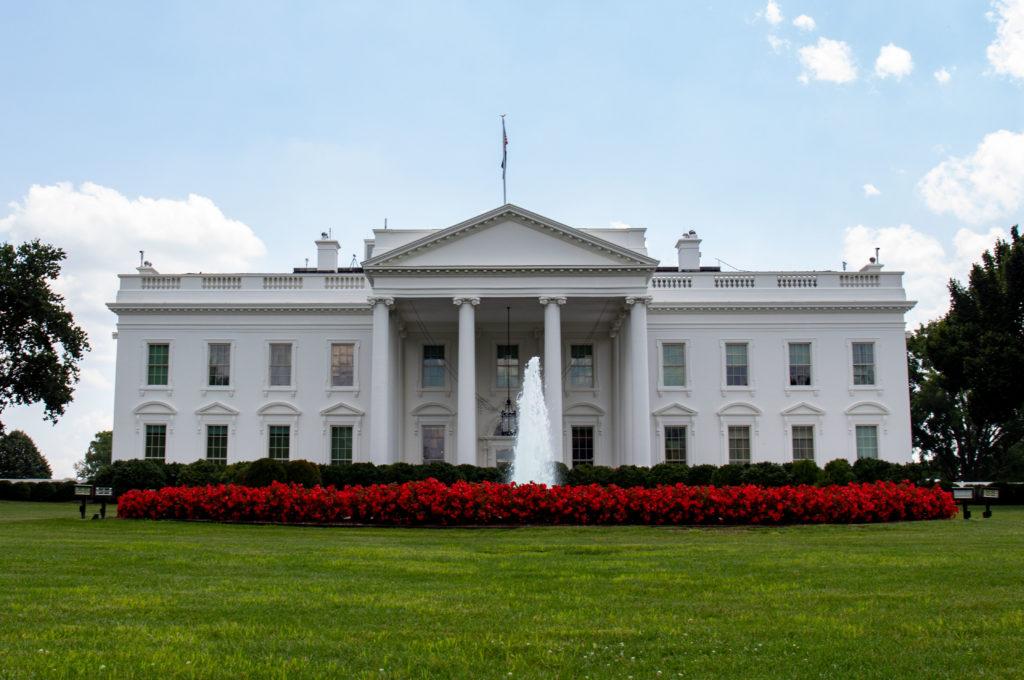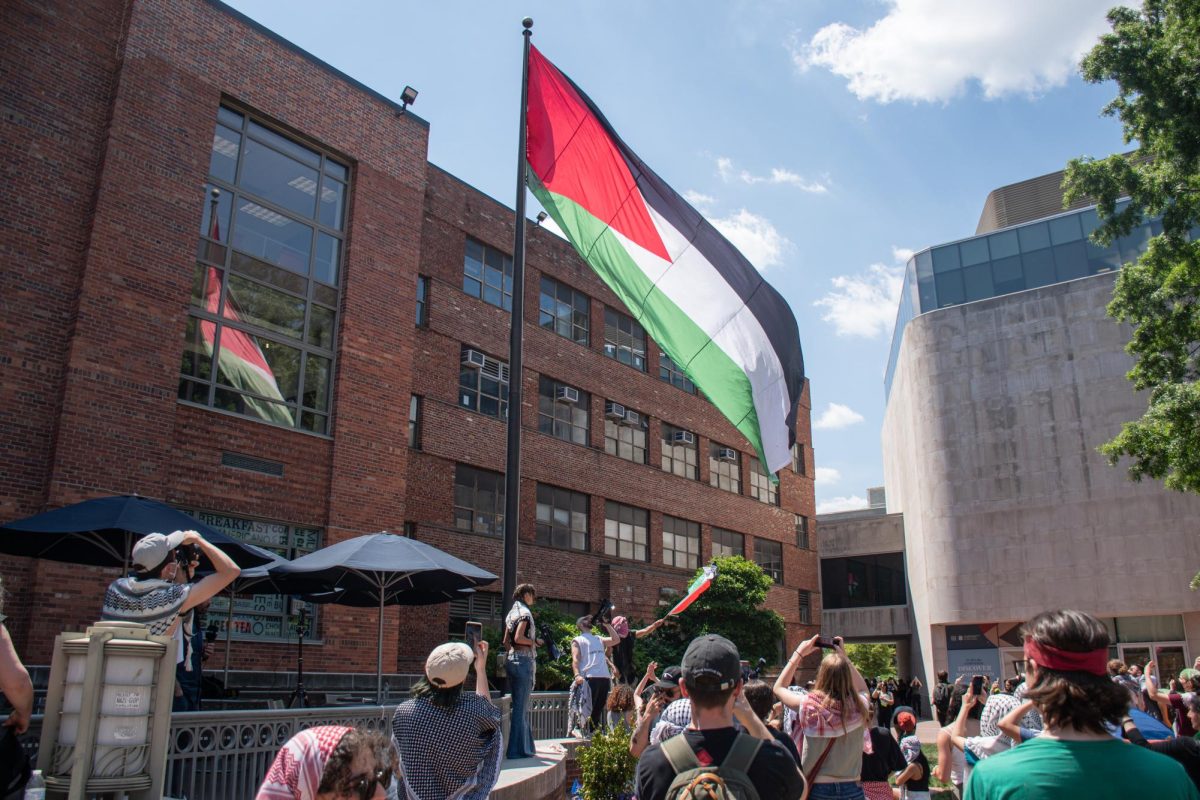
Updated: May 16, 2016 at 11:40 p.m.
More than 150 GW medical students officially became doctors Sunday afternoon at the School of Medicine and Health Sciences M.D. celebration and hooding ceremony in Lisner Auditorium.
Jonathan B. Perlin, the president of clinical services and chief medical officer at the Hospital Corporation of America, stressed the importance of empathy and a connected history when practicing medicine for the graduates.
Several retiring SMHS faculty members were also given emeritus status during Sunday’s festivities, which also featured remarks by Dean Jeffrey Akman, graduating student Justin Cappuzzo and the administration of the Hippocratic Oath.
1. Narrative as a connecting force
Perlin invoked the spirit of pioneering physician Sir William Osler to begin his address to the Class of 2016, reciting Osler’s advice for being successful in the field: “Listen to the patient, he is telling you the diagnosis.”
“He means every patient has a story,” Perlin said. “Which leads me to the theme of my remarks: the concept of narrative as it connects the science of medicine with the art of healing. As it connects our honed medical skills with our humanity, and as it connects each of us to each other.”
Perlin went on to tell his own story, and explained how his journey through medical school and lessons learned as a practitioner have shaped him into the doctor he is today.
“It is often said that medicine is a science and healing is an art,” Perlin said. “It is less often noted that what bridges the two is a narrative– a narrative that connects a plausible scientific hypothesis about a patient’s health with the person who stands, sits or reclines before you.”
2. Growing together
After the graduates were presented their degrees and hooded by various faculty members, Cappuzzo spoke to those in attendance about how although earning his diploma was a difficult experience, it was also a shared one.
“Throughout the many nights on call, studying for the infamous multiple choice shelf exams, and standardized patient encounters, the singular experience has bonded us so that we can now go together to the next step of our medical educations an careers,” he said. “We have grown together, we have changed each other. And so class I say this: You have kept me honest and you’ve kept me strong, and for that I’m eternally grateful.”
3. Service, altruism, integrity and courage
Before the graduates concluded the ceremony by reciting the Hippocratic Oath, Akman charged the new professionals with reinforcing the core values found within it: service, altruism, integrity and courage.
“Doctors, your path on the road to physician hood began with an emphasis on professionalism and humanism, with the white coat as a symbol of both,” Akman said. “Now, with the recitation of the Hippocratic Oath, we come full circle…The career that you have chosen demands that you embody these values.”
He encouraged the graduating class to continue to do the right thing no matter how difficult or unpopular it may be.
“While courage is not a word you hear mentioned very frequently in medical school, it seems to me it’s times like we’re going through now where it is really important to hear physician voices,” he said.
Akman delivered a host of examples like treating patients with deadly infections like Ebola and Zika virus, speaking out against challenging social issues like the gun violence epidemic and working in underserved communities to address health disparities among racial and ethnic minorities.
“There’s so much that needs to be done in our communities, in our country and around the world,” Akman said. “Strive to be the physician citizen, the physician officer or the physician activist that will make an impact beyond the exam room.”
Like these photos? You can purchase your personal photo from this graduation ceremony online at: www.hatchetphotos.com




